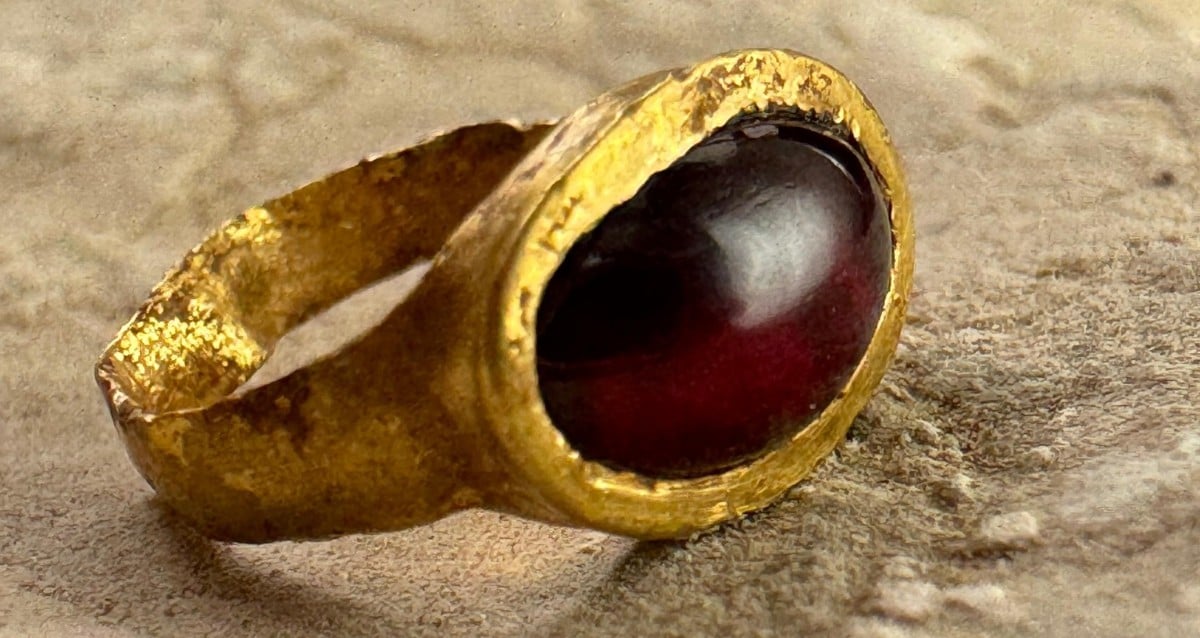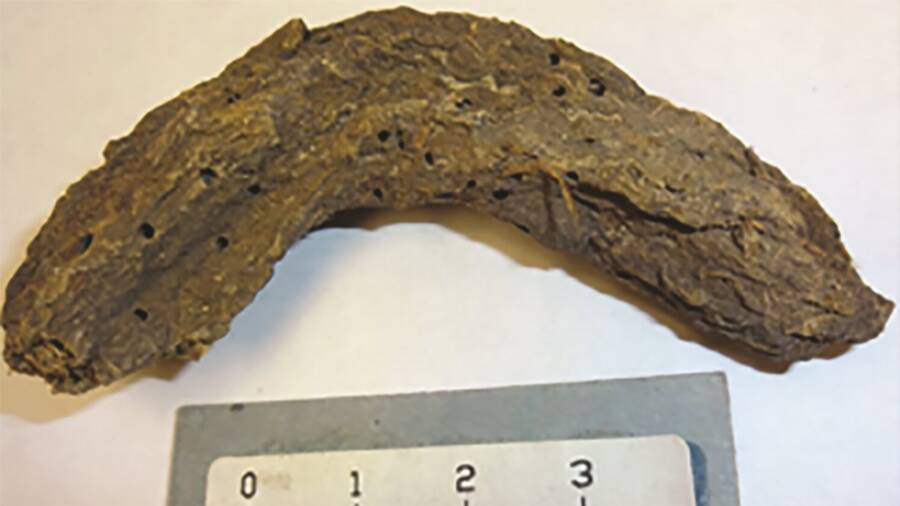Ancient Mystery Unearthed: 2,300-Year-Old Gold Ring with Enigmatic Red Gemstone Discovered in Jerusalem’s City of David
So, imagine this: you’re digging through ancient dirt in Jerusalem’s City of David, and boom — out pops a gold ring, glinting like it just stepped off a modern jeweler’s display case. It’s set with a bright red gemstone, and at first, the archaeologists were thinking, “Nah, that’s gotta be somebody’s lost heirloom from last week!” Nope — turns out this tiny treasure belonged to a little girl living over two millennia ago, somewhere between the late 3rd and early 2nd century B.C.E. Now here’s what really fries the noodle: this ring, and a stash of other bling, might’ve been deliberately buried as part of an ancient coming-of-age tradition. Bet you didn’t know that a 2,300-year-old piece of jewelry could connect us so vividly to a young girl’s story — or tempt us to wonder what she’d say if asked, “Where’s my ring?” Grab your mental magnifying glass; history just got a whole lot sparkier. LEARN MORE
A gold band set with a red gemstone, the ring likely belonged to a little girl who lived nearby during the Second Temple period — and it’s so well preserved that archaeologists initially thought it was a piece of modern jewelry.

Eliyahu Yanai, City of David/Israel Antiquities AuthorityThe ring dates back to the Second Temple period, between the late 3rd century and early 2nd century B.C.E.
During recent excavations in Jerusalem’s ancient City of David area, an archaeologist pulled a gold ring out of the dirt. At first, researchers thought that the ring, found in excellent condition, might be a modern piece of jewelry that had been inadvertently dropped at the excavation site. But upon closer look, they realized that this stunning gold band set with a red garnet stone was actually an ancient relic dating back 2,300 years.
And this ring is just the latest historical gold artifact found at the site. Archaeologists believe that the hoard of jewelry found here might have been intentionally buried more than two millennia ago as part of a Hellenistic tradition marking the transition from childhood to adulthood.
The Discovery Of A 2,300-Year-Old Gold Ring In Jerusalem’s Ancient City Of David

Maor Ganot, City of David/Israel Antiquities AuthorityThe excavation site in the City of David where the gold ring was found.
According to a statement from the Israel Antiquities Authority (IAA), the gold ring was found during excavations in the City of David at Jerusalem Walls National Park. Excavators were sifting through the dirt when one of them stumbled upon this astonishing gold ring adorned with a red gemstone.
“We sifted the dirt through a sieve, right near the excavation area, and suddenly Ben, who works with me, pulls a gold ring out of the dirt,” City of David excavator Rivka Lengler recalled of the moment the ring was discovered. “At first, he was sure it must be a modern item dropped by one of our excavators, but when I examined the ring, I immediately assessed it as something ancient. We called over the archaeologists, everyone gathered around us and marveled at the special find… It was very exciting.”
The ring was especially exciting because a similar gold ring had been found nearby last year. Like that earlier find, this newly-uncovered ring was more than 2,000 years old, and dated to between the late 3rd century and early 2nd century B.C.E.

Yiftah Shalev/ Israel Antiquities AuthorityThe two rings from the City of the David look similar to each other and both date from the early Hellenistic period.
What’s more, the rings were found near other jewelry: bronze earrings, a gold earring with a horned animal image, and a decorated gold bead.
Rather than being dropped by accident, archaeologists suspect that these objects may have been buried purposefully during antiquity, and that they may connect to coming-of-age traditions in the early Hellenistic period.
The Hellenistic-Era Tradition Associated With The Ring Found In Jerusalem

E Emil Aladjem/Israel Antiquities AuthorityThe newly-uncovered gold ring is small and was likely once worn by a child.
The ring found in the City of David is particularly small, so much so that it was likely worn by a young girl. And because it was seemingly left intentionally with the other objects, it might be related to a Hellenistic right of passage for girls.
“That the two small rings and the rest of the jewelry were all discovered under the building’s floors raises the possibility that they were buried there on purpose,” Dr. Marion Zindel, who studied the ring, explained.
She continued: “One of the possibilities now being examined is that the jewelry found in the building’s foundations was in the context of executing a well-known Hellenistic period custom in which betrothed women would bury jewelry and other childhood objects in the house foundations as a symbol of the transition from childhood to adulthood.”
The IAA additionally reports that whoever left the ring behind likely came from a family of great wealth. Near the jewelry hoard is the foundation of a large building, hinting at the family’s prosperity, and the gold ring, with its “brightly colored precious stone” lining up with well-known fashions of the time, would likely have been expensive.



















